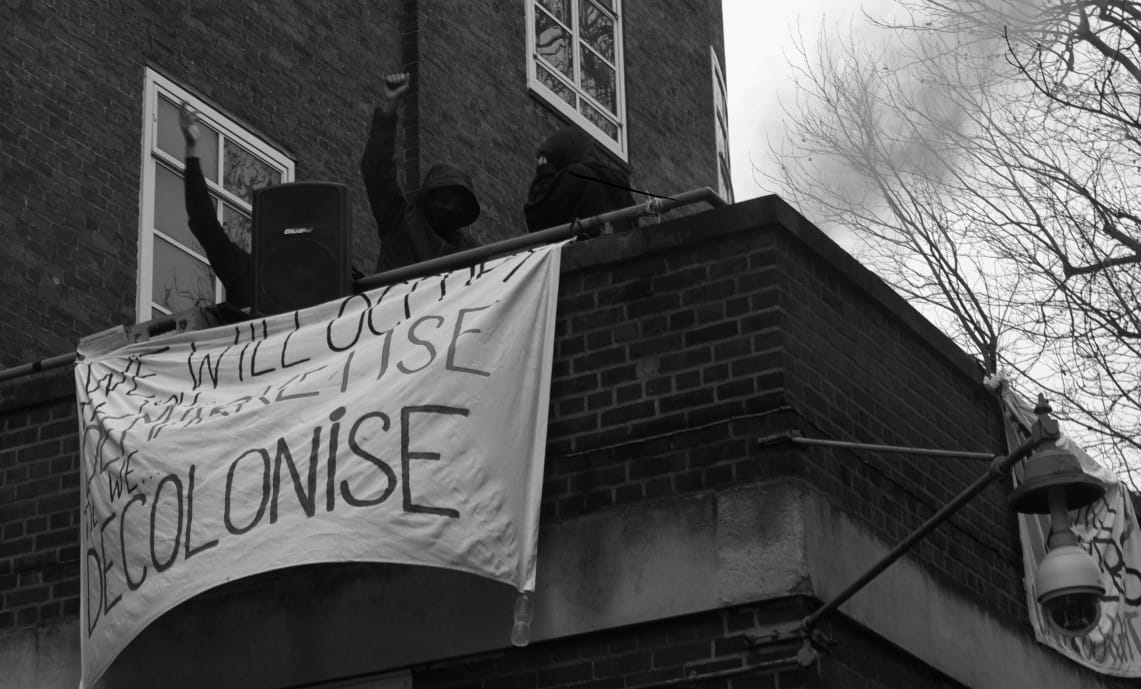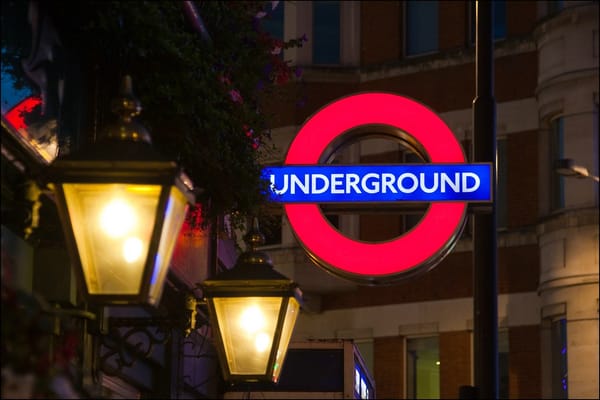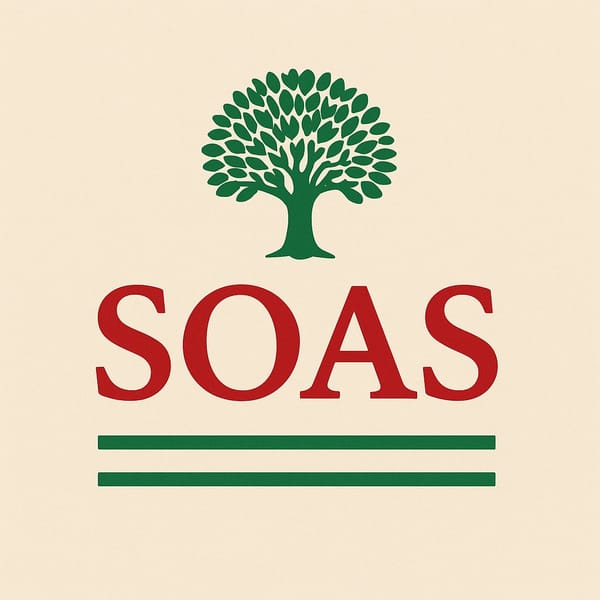Holding Space at SOAS: Reflecting on Past Student Struggles

By Sam Landis, BA Social Anthropology & International Relations
On Friday, November 24th, hundreds of students and workers from SOAS, UCL, KCL, and LSE gathered on the SOAS campus to demand their institutions call for an immediate ceasefire in Palestine and end their complicity in Israel’s occupation. The demonstration, held as SOAS students remain suspended following their involvement in an ‘All Out for Palestine’ rally in early October, was a powerful display of cross-campus unity and collective solidarity with the Palestinian people.
Now more than ever, taking space on university campuses — even as our institutions continue to forcefully suppress political expression and impose numerous barriers to free speech — is essential.
“With ever-increasing levels of surveillance, securitisation and personal retaliation being deployed by universities to cultivate fear in the minds of students and limit their capacity to resist, we must remember that occupying space as a means to actualize student and staff demands is a strategy deeply embedded in the history of SOAS.”
With ever-increasing levels of surveillance, securitisation and personal retaliation being deployed by universities to cultivate fear in the minds of students and limit their capacity to resist, we must remember that occupying space as a means to actualise student and staff demands is a strategy deeply embedded in the history of SOAS. Reflecting on this history, much of it incredibly recent, is paramount in making visible an often forgotten past of successful student-led movements that SOAS has tried so vehemently to erase.
One of the most widely publicized SOAS occupations occurred in June of 2009. Following the deportation of nine SOAS cleaners, including a woman six months pregnant, 60 students stormed the office of former SOAS Director Paul Webley where they remained for three days.
The deportation came three years after the SOAS cleaning staff created the ‘Justice for Workers’ campaign in an effort to improve their working conditions and gain official employment status from SOAS, which meant they would no longer have to rely on precarious, temporary contracts from independent staffing agencies. Many believe the deportation was carried out with full knowledge and complicity of the university’s management, and was done as a means to lessen the momentum generated by student-staff organizing.
Students demanded that SOAS write the home secretary to request the cleaners be granted ‘exceptional leave’ to remain in the UK, investigate the immigration raid, begin discussions of directly employing SOAS cleaners, and take no disciplinary action against the occupiers. All of these demands were won, and over the next ten years, students and staff worked tirelessly and engaged in numerous strikes to bring all SOAS cleaners in-house, improve sick and holiday pay, and better their pension schemes.
In 2010, SOAS students occupied the Brunei Gallery for three weeks to protest rising tuition fees. Although no demands were won through this direct action, the occupation was part of a widespread movement of collective mobilization throughout the UK surrounding university fee increases and allowed students to bring attention to their struggle and challenge the marketised education system. The blog from this occupation is still accessible online at soasoccupation2010.wordpress.com. A haiku written by one of the occupiers published on the blog reads:
Teach out walk out run
Our anger power hasn’t gone
THIS HAS JUST BEGUN!
In 2017, members of the SOAS community again occupied the managerial corridor for two weeks after the university threatened to permanently close the student refectory, a move which would’ve seen many workers fired and a main source of food on campus shuttered.
Students demanded the following: keep the refectory open, let all the catering staff keep their jobs, match the pay of catering staff to the same level as other outsourced staff, and begin the process of bringing SOAS cleaners in-house. All of their demands were achieved. In 2019, students occupied the library for three days to bring attention to the rampant pay cuts and understaffing faced by library workers. This sit-in followed in the footsteps of a 12-day occupation of the library in 1998, where students fought for and won full and free access to Senate House Library, which formerly used to cost £70 per academic year for the majority of SOAS students.
Students and staff also held various mini-occupations of the SOAS Green throughout 2019 and 2020 while the University of London began plans to construct a building over it. After continuous resistance which delayed exploratory projects by UoL multiple times, the plans were eventually scrapped when COVID came along.
The most recent occupation at SOAS, which took place in March of 2022, marked a distinctive shift in how student resistance was handled by university management. Nearly one year prior,
SOAS Director Adam Habib had been hired, quickly suspended following his use of a racial slur and verbal harassment of a student, given a vote of no-confidence, and then reinstated. With widespread anger over Habib’s continued directorship, students built the #FireHabib campaign, which was still going strong by the Spring of 2022 and acted as a focal point of the March occupation. Students also called for the implementation and advocation of demands from various trade unions and societies, a commitment to decolonisation and de-marketization from SOAS, and for no disciplinary action to be taken against occupiers.
Throughout the occupation, Habib forbade students from accessing toilets, shut down the entire campus for days, painted half of the walls of our student union white as an intimidation tactic, and engaged in only one negotiation session which failed to acknowledge the occupation’s demands. After eight days, a team of over forty private bailiffs equipped with riot shields were called into campus in the middle of the night to evict the occupiers. The bailiffs climbed campus buildings with ladders, smashed windows, and dragged occupiers out by their hands and feet; three students sustained injuries during the eviction. None of the occupier’s demands were met.
In the wake of management’s extremely intense response to the 2022 occupation, SOAS spent £650,000 on external security in one year, drastically increased student surveillance and police presence on campus, and administered harsh threats and punishments to student protestors.
This year’s indefinite suspension of student activists signals the entering of a new terrain of political suppression at SOAS, one which brings Habib’s nearly decade-long battle against student resistance to the forefront. As Vice Chancellor of University of the Witwatersrand in South Africa, Habib unabashedly muzzled opportunities for student-staff organizing and sanctioned police violence as a means to quell the nationwide #FeesMustFall protest movement of 2015. The tactics he deployed at Wits are finding their way to SOAS more every day.
As the demonstration on Friday the 24th of November illustrated, no matter how hard management tries to silence their students, we will continue to hold space and make our voices heard. While we move forward in our aims to reinstate suspended students, end SOAS’s complicity in Israeli apartheid, and resist violent tactics of political suppression, reflecting on the history of past student mobilizations can offer us not only solace and support but also a guidebook for the future.
Photo caption: Occupiers holding a rally from the SOAS managerial corridor in March of 2022. (Credits: Sam Landis)



